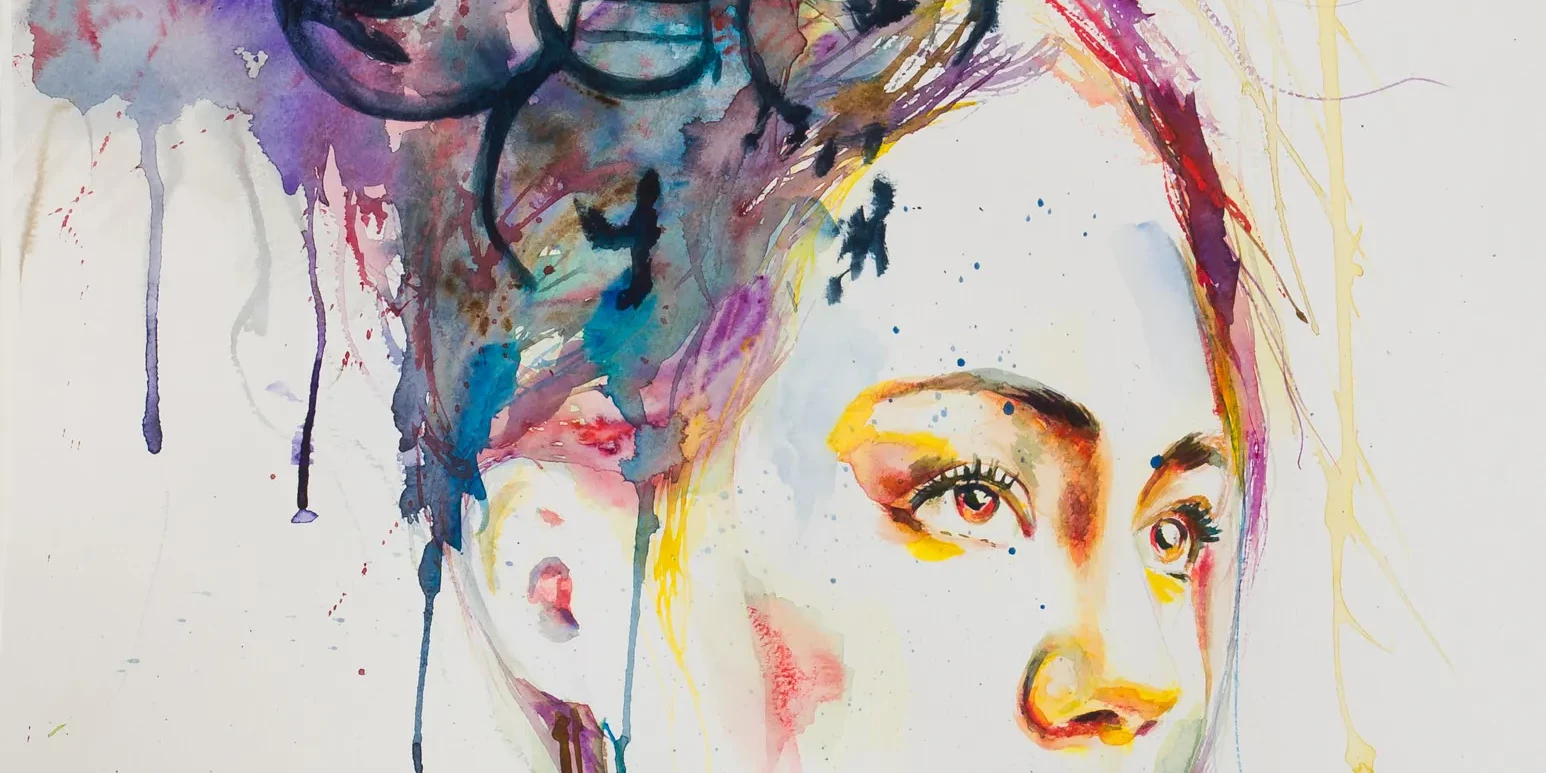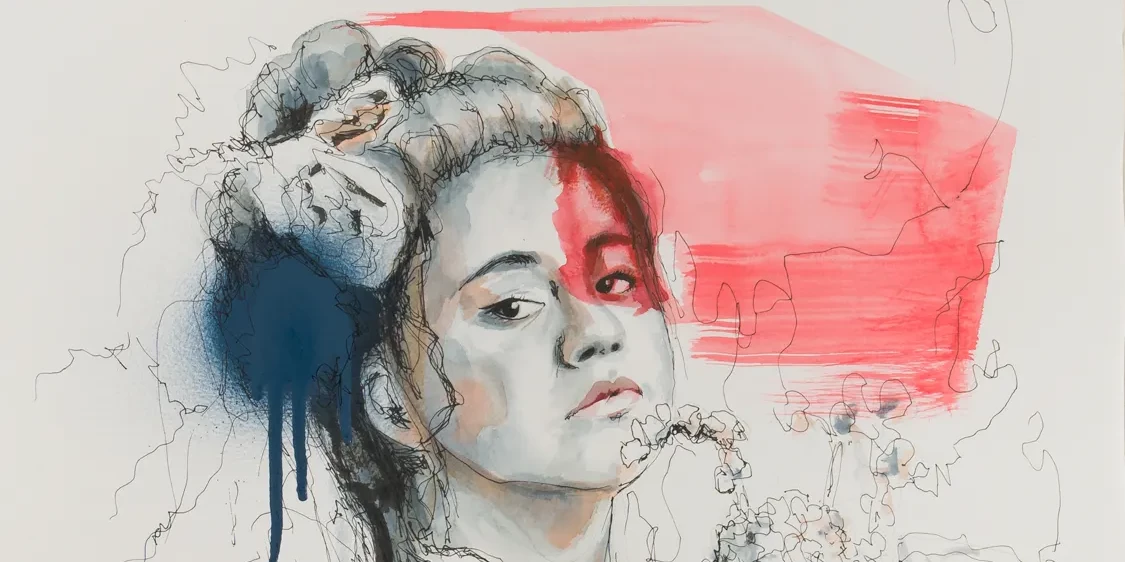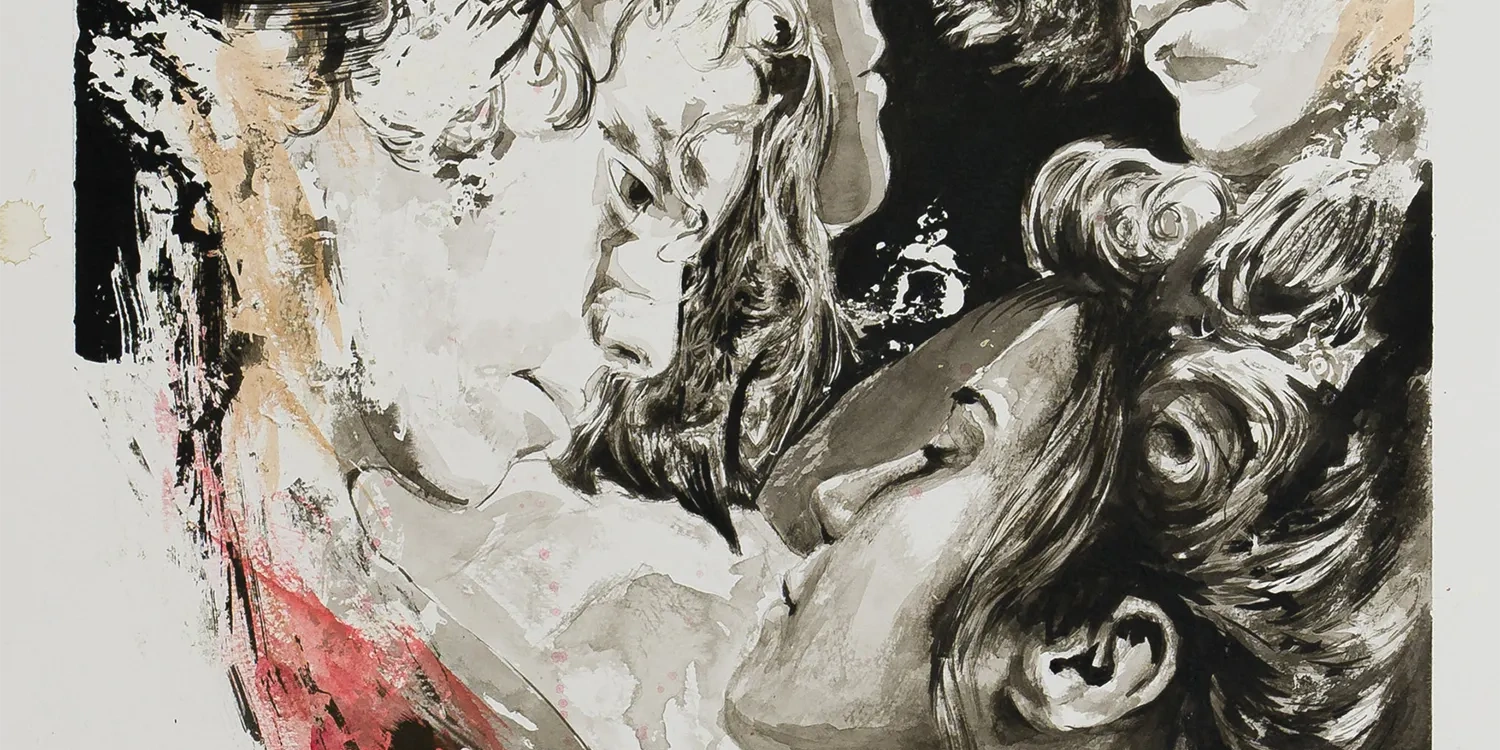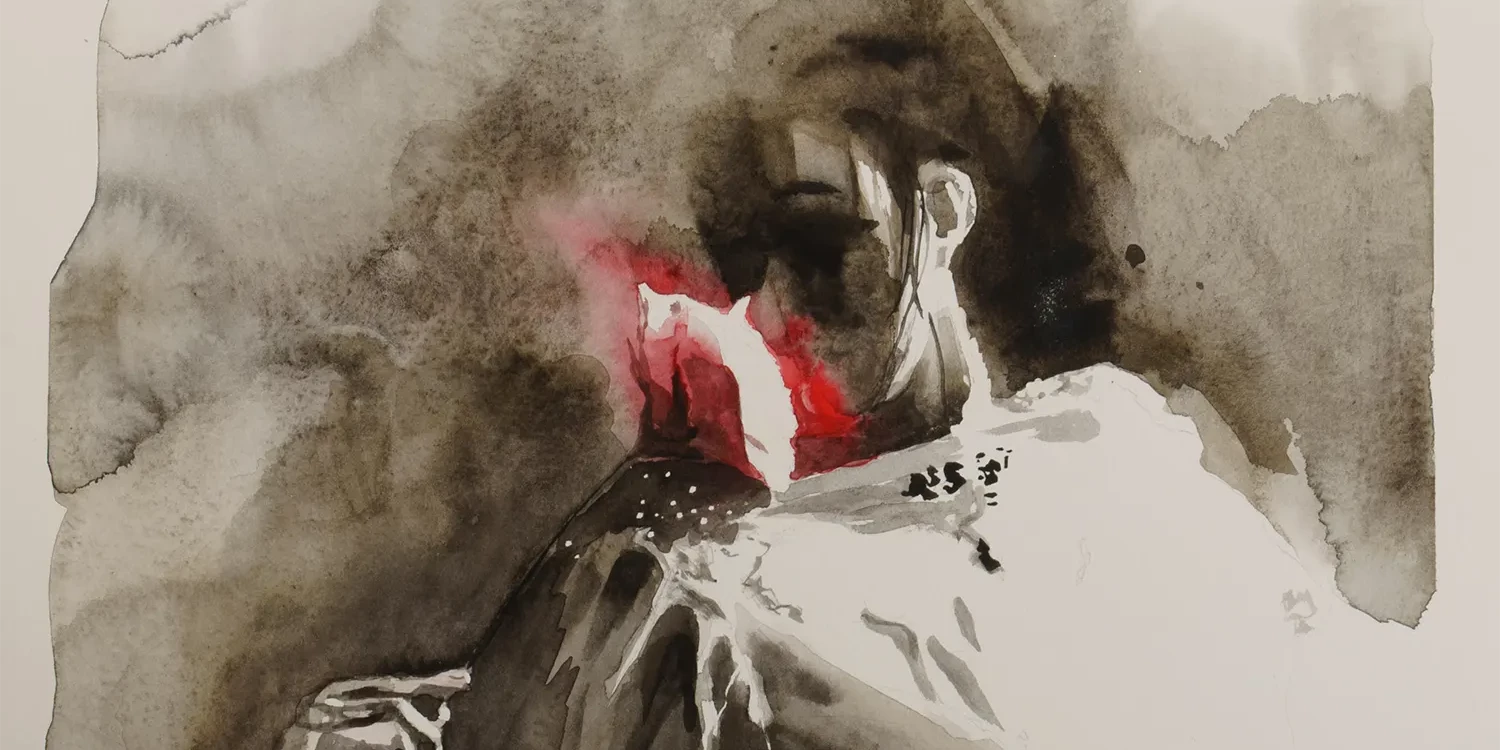The initial phase of the story primarily serves as a comparative representation of the psychological states of the two young protagonists. On one hand, we have Juliet: on the surface, she appears calm, but she’s deeply entangled in the family drama, symbolized by the image of Verona. She is trapped by the desires and expectations of her parents.

On the other hand, there’s Romeo: outwardly he seems flawless, but he’s tormented by selfish desires and impulses, aimed solely at his own personal gratification.
In a profound state of distress, Juliet appears shattered. The painting depicts her as if she’s tearing pieces from herself, to the point of seeming on the verge of disintegration.
In a profound state of distress, Juliet appears shattered. The painting depicts her as if she’s tearing pieces from herself, to the point of seeming on the verge of disintegration.
Romeo, on the other hand, is engulfed in a whirlwind of conflicting emotions.

The subsequent scene, however, marks a turning point, the beginning of a transformation. Juliet realizes that change requires letting go of a part of herself. It’s at this moment, wearied by her role as the victim, that she decides to evolve.

The following painting, as previously mentioned, is also the most significant. This is because it illustrates the foundation upon which their relationship is built, which is now either re-established or, if it had been compromised, now has the ability to find balance again.
To truly love Juliet, Romeo must see her as an extension of himself and, consequently, care for her as he would for his own being. The same principle applies to Juliet. This mutual recognition and appreciation is, essentially, the driving force that fuels the whirlwind of their love.

In one of the final paintings available, the energy of love is symbolized by the rose, the only vivid element prominently featured in the artwork. Juliet draws a rose towards herself, which appears to dissolve her shadows and radiate light, symbolizing the negative aspects fading away.
This seems to emphasize that only love, both for oneself and for others, represents the true driving force behind genuine and lasting change.
The collection culminates in a theatrical and symbolic gesture: the elimination of one’s negative self, a necessary sacrifice to stay beside the loved one.

The final piece represents a conclusion that heralds a future. It’s not a saccharine or idealized portrayal, as it meticulously describes how reaching such a point involves a journey filled with pain and sacrifice.
It’s not a saccharine or idealized portrayal, as it meticulously describes how reaching such a point involves a journey filled with pain and sacrifice.